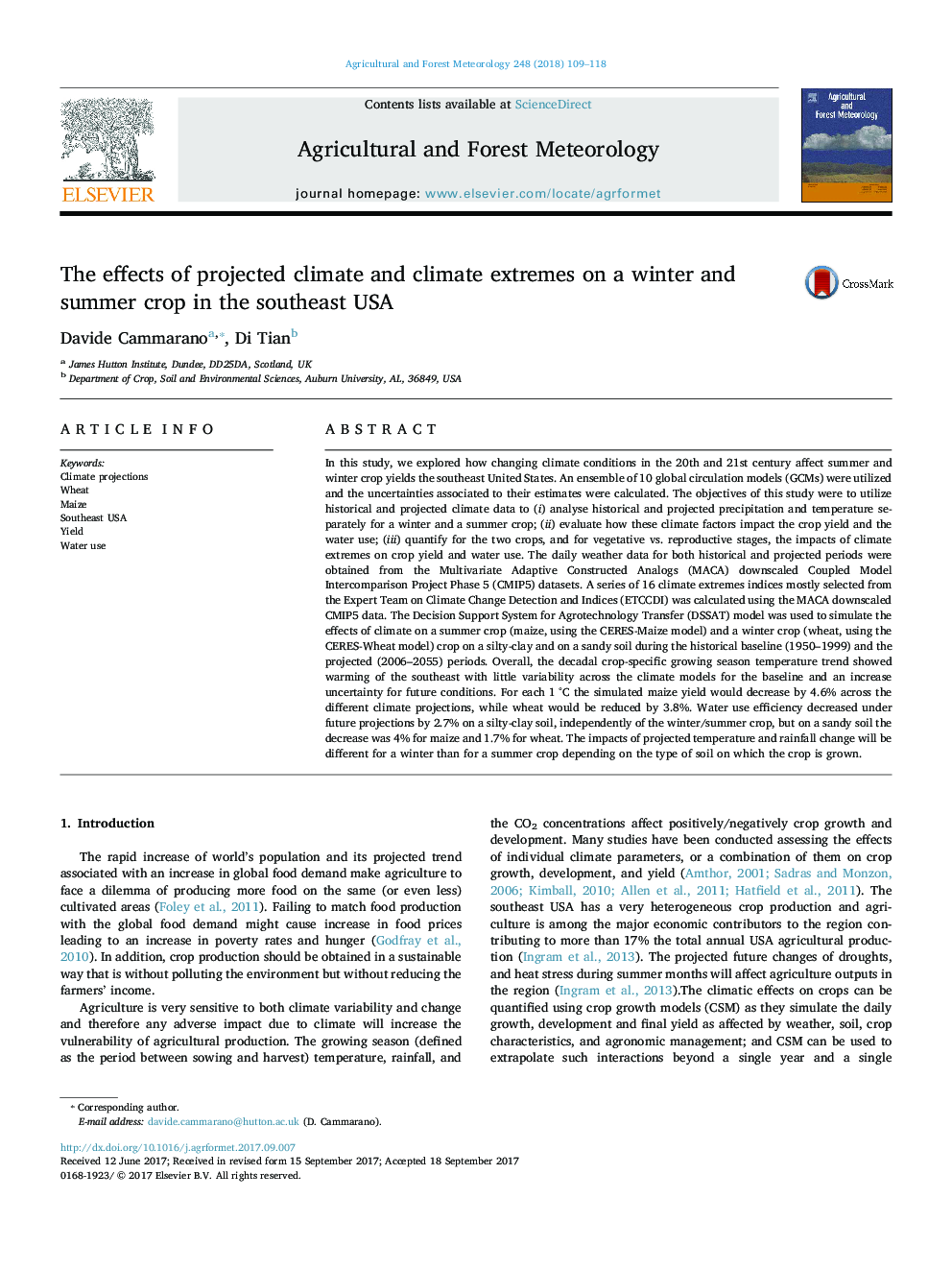| کد مقاله | کد نشریه | سال انتشار | مقاله انگلیسی | نسخه تمام متن |
|---|---|---|---|---|
| 6536874 | 1420853 | 2018 | 10 صفحه PDF | دانلود رایگان |
عنوان انگلیسی مقاله ISI
The effects of projected climate and climate extremes on a winter and summer crop in the southeast USA
ترجمه فارسی عنوان
اثرات پیش بینی آب و هوا و شرایط آب و هوایی در یک محصول زمستان و تابستان در جنوب شرقی ایالات متحده آمریکا
دانلود مقاله + سفارش ترجمه
دانلود مقاله ISI انگلیسی
رایگان برای ایرانیان
کلمات کلیدی
پیش بینی های آب و هوا، گندم، ذرت، جنوب شرقی ایالات متحده، بازده، استفاده از آب،
موضوعات مرتبط
مهندسی و علوم پایه
علوم زمین و سیارات
علم هواشناسی
چکیده انگلیسی
In this study, we explored how changing climate conditions in the 20th and 21st century affect summer and winter crop yields the southeast United States. An ensemble of 10 global circulation models (GCMs) were utilized and the uncertainties associated to their estimates were calculated. The objectives of this study were to utilize historical and projected climate data to (i) analyse historical and projected precipitation and temperature separately for a winter and a summer crop; (ii) evaluate how these climate factors impact the crop yield and the water use; (iii) quantify for the two crops, and for vegetative vs. reproductive stages, the impacts of climate extremes on crop yield and water use. The daily weather data for both historical and projected periods were obtained from the Multivariate Adaptive Constructed Analogs (MACA) downscaled Coupled Model Intercomparison Project Phase 5 (CMIP5) datasets. A series of 16 climate extremes indices mostly selected from the Expert Team on Climate Change Detection and Indices (ETCCDI) was calculated using the MACA downscaled CMIP5 data. The Decision Support System for Agrotechnology Transfer (DSSAT) model was used to simulate the effects of climate on a summer crop (maize, using the CERES-Maize model) and a winter crop (wheat, using the CERES-Wheat model) crop on a silty-clay and on a sandy soil during the historical baseline (1950-1999) and the projected (2006-2055) periods. Overall, the decadal crop-specific growing season temperature trend showed warming of the southeast with little variability across the climate models for the baseline and an increase uncertainty for future conditions. For each 1 °C the simulated maize yield would decrease by 4.6% across the different climate projections, while wheat would be reduced by 3.8%. Water use efficiency decreased under future projections by 2.7% on a silty-clay soil, independently of the winter/summer crop, but on a sandy soil the decrease was 4% for maize and 1.7% for wheat. The impacts of projected temperature and rainfall change will be different for a winter than for a summer crop depending on the type of soil on which the crop is grown.
ناشر
Database: Elsevier - ScienceDirect (ساینس دایرکت)
Journal: Agricultural and Forest Meteorology - Volume 248, 15 January 2018, Pages 109-118
Journal: Agricultural and Forest Meteorology - Volume 248, 15 January 2018, Pages 109-118
نویسندگان
Davide Cammarano, Di Tian,
